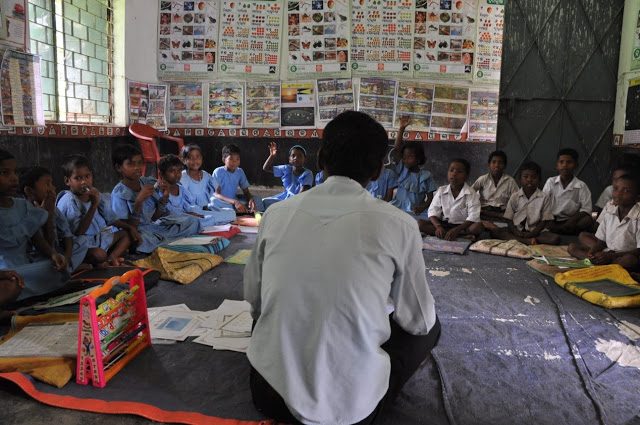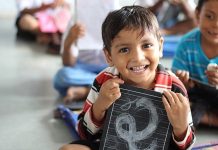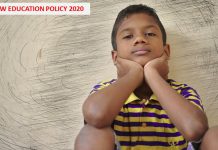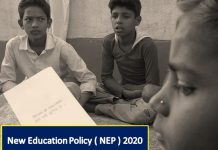The National Education Policy (NEP), 2020 articulates, “No hard separations between arts and sciences, between curricular and extra-curricular activities, between vocational and academic streams, etc. in order to eliminate harmful hierarchies among, and silos between different areas of learning – multi-disciplinarity and a holistic education across the sciences, social sciences, arts, humanities, and sports for a multidisciplinary world to ensure the unity and integrity of all knowledge (p.5, NEP, 2020),as the key fundamental principles guiding the National policy.
This article intends to analyse the above principles in the context of school education. It attempts to elaborate on what this would mean for school curriculum and pedagogy, textbooks, resource materials and teacher preparation. It highlights the challenges in implementing these ideals. The word multidisciplinary seems to be the most commonly occurring word in this document which needs a detailed understanding. The NEP envisions that there are no and hard separate boundaries between subjects and views education as holistic and integrated. The boundaries create hierarchies among subjects and some subjects are seen as important and often vocational subjects and extra-curricular activities are neglected. NEP reiterates that knowledge is to be seen in an integrated manner and not in isolation as sciences or mathematics or social sciences and so on. The vision is ambitious and ideal and the question to ask is, what would it mean to bring it to practice? Or is it even possible to implement this? In the following section, I offer a few suggestions on how curriculum and pedagogy and teacher preparation need to be rethought in order to bring in the multi-disciplinarity.
Curriculum planning and pedagogy
If the subject’s boundaries are to be removed, the curriculum has to be theme-based and integrated. As envisioned, if hierarchies have to be negligent among subjects then curriculum planning has to be thought in such a way that it brings together different aspects of learning within a theme. For example, in the secondary stage- if the theme is ‘Change’- changes around us, changes in my body, physical and chemical changes, changes in the forms of governance, how nations have evolved, evolving art forms, changes in clothes we wear, the food we eat, how our lifestyles have changed, our changing occupations, how a game in cricket has changed over years, changes that have occurred in technology and so on could be the topics or areas of study. ‘Change’ could be a theme that can run over a year or two or more. Say, there is a presentation on kings and evolving forms of governance, theatre, arts and music and its forms can be explored during the presentation. It could be a shadow play or a puppet show. Students can study materials or work on music composition and explore movement as they plan for the presentation. In such planning, there is no clear division between subjects and boundaries are not hard. The students may be allowed to choose and explore topics of their interest.
NEP discusses holistic learning and experiential learning. It mentions art and sports integration and cross-curricular pedagogical approach. However, there are some contradictions in the way this is articulated. NEP (p.11), notes, “experiential learning within each subject, and explorations of relations among different subjects, will be encouraged and emphasized despite the introduction of more specialized subjects and subject teachers”. This view of experiential learning is limiting and again it seems to bring in the subject boundaries.
The questions around assessment
The assessments in such a multidisciplinary learning environment have to be formative and continuous.
It might take a lot of shifts in the mindsets to move from one right answer. The assessment has to move out of multiple-choice objective tests with one right or wrong answer. If the boundaries are to be fluid, the assessment needs to be more open-ended giving opportunities to approach a problem or an issue with multiple perspectives. The NEP also articulates assessment of, for and as learning.
The intricacies around grades and timetables
If the boundaries between subjects are to be removed and kept fluid, the way we imagine specific grades and levels also need to change. Two or three years have to be seen together. Dhankar (2017), notes that year-wise planning of the curriculum and graded approach limits children’s experiences. If the education has to be child-centred and if the assessment has to be continuous and comprehensive specific grade levels and year wise planning has to be rethought.
Similarly, the timetable has to be block periods or allowing for 1 to 2 hours of interaction. Forty minutes of each subject or moving from one to another may not help if the education is to be viewed integrated and holistic. Given a time duration of 1 hour 30 min or 2 hours students can explore and pursue the topic of interest by reading, researching, peer learning or engaging in activities like farming, gardening, nature walk, painting, singing and so on in-depth.
The NEP does not suggest much on the grade level or doing away with grades. It only suggests considering the time as a semester and offering modular courses.
Textbooks and learning materials
For multi-disciplinary learning, a subject textbook may not serve many purposes. In the current situation, textbooks are the only resource available to teachers and teachers tend to follow the textbook as is. The NEP seems to have acknowledged that a single textbook may not be suitable for multidisciplinary approach. NEP (p.17) suggests,
“All textbooks shall aim to contain the essential core material (together with discussion, analysis, examples, and applications) deemed important on a national level, but at the same time contain any desired nuances and supplementary material as per local contexts and needs”. It indicates that teachers have the flexibility to choose materials and resources based on their pedagogical styles.
This requires a lot of preparation and planning and teachers need to be trained in this aspect. The NCERT textbooks were revised based on the National Curriculum Framework (2005) and EVS and Mathematics textbooks provided scope for skills and capabilities such as observation, survey, data collection, analysis, inference making and reasoning and so on. However, the teachers were not sure how to implement these given the classroom strength or the lack of training. A well-designed resource or a material may not serve the purpose fully if the teachers are not prepared and the principles behind such an approach are not shared. Revision of materials and resources need to go hand in hand with rigorous training of teachers on how to implement and use the materials in the classroom.
Understanding teacher preparation
As the school education is visualised as holistic, there is a suggestion in tandem that teacher preparation needs to be thought through from multidisciplinary perspectives. Multidisciplinary and demonstrative pedagogy in the teacher training forms the crux of these and pedagogy must be overhauled. The pedagogy in the teacher education serves as foundational and base for developing and trainee teachers. Different pedagogic approaches such as inquiry, experiential and project-based learning have to be demonstrated and applied during the teacher training so that teachers experience the benefits and challenges of the various pedagogical approaches.
To implement some of the suggestions offered concerning curriculum, pedagogy and assessment would mean complete revamping of the curriculum and pedagogy. Rethinking of year-wise curriculum and assessments that supports the pedagogy is pertinent. Teacher preparation is another key area that needs attention.
The important questions that are asked at this juncture are, would NEP help achieve universal access to education and would literacy and numeracy be achieved at the appropriate levels. These basic questions are still looming large. As children are moving to private schools leaving the government school, is multidisciplinary approach a huge ask? Or is it with the view that this could be achieved through private partnerships? NEP seems to be indicating the role of private.
One might argue that a policy such as this must be futuristic and idealistic. However, many of the suggestions offered in Kothari commission and NPE, 1986 have not seen light yet. The policy and curriculum documents are often rhetorical and where we fail is in the actual implementation of the policy. The feasibility of the multidisciplinarity, holistic and integrated approach remains a question given the challenges in the Indian context.
Indumathi S completed her Doctorate in Education from Tata Institute of Social Sciences and is an independent consultant based in Bangalore.














